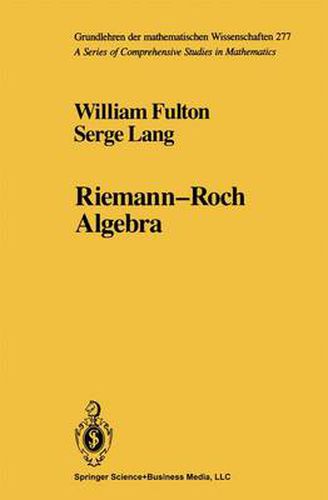Readings Newsletter
Become a Readings Member to make your shopping experience even easier.
Sign in or sign up for free!
You’re not far away from qualifying for FREE standard shipping within Australia
You’ve qualified for FREE standard shipping within Australia
The cart is loading…






This title is printed to order. This book may have been self-published. If so, we cannot guarantee the quality of the content. In the main most books will have gone through the editing process however some may not. We therefore suggest that you be aware of this before ordering this book. If in doubt check either the author or publisher’s details as we are unable to accept any returns unless they are faulty. Please contact us if you have any questions.
In various contexts of topology, algebraic geometry, and algebra (e.g. group representations), one meets the following situation. One has two contravariant functors K and A from a certain category to the category of rings, and a natural transformation p:K–+A of contravariant functors. The Chern character being the central exam- ple, we call the homomorphisms Px: K(X)–+ A(X) characters. Given f: X–+ Y, we denote the pull-back homomorphisms by and fA: A(Y)–+ A(X). As functors to abelian groups, K and A may also be covariant, with push-forward homomorphisms and fA: A( X)–+ A(Y). Usually these maps do not commute with the character, but there is an element r f E A(X) such that the following diagram is commutative: K(X)~A(X) fK j J~A K( Y) ——p;-+ A( Y) The map in the top line is p x multiplied by r f. When such commutativity holds, we say that Riemann-Roch holds for f. This type of formulation was first given by Grothendieck, extending the work of Hirzebruch to such a relative, functorial setting. Since then viii INTRODUCTION several other theorems of this Riemann-Roch type have appeared. Un- derlying most of these there is a basic structure having to do only with elementary algebra, independent of the geometry. One purpose of this monograph is to describe this algebra independently of any context, so that it can serve axiomatically as the need arises.
$9.00 standard shipping within Australia
FREE standard shipping within Australia for orders over $100.00
Express & International shipping calculated at checkout
This title is printed to order. This book may have been self-published. If so, we cannot guarantee the quality of the content. In the main most books will have gone through the editing process however some may not. We therefore suggest that you be aware of this before ordering this book. If in doubt check either the author or publisher’s details as we are unable to accept any returns unless they are faulty. Please contact us if you have any questions.
In various contexts of topology, algebraic geometry, and algebra (e.g. group representations), one meets the following situation. One has two contravariant functors K and A from a certain category to the category of rings, and a natural transformation p:K–+A of contravariant functors. The Chern character being the central exam- ple, we call the homomorphisms Px: K(X)–+ A(X) characters. Given f: X–+ Y, we denote the pull-back homomorphisms by and fA: A(Y)–+ A(X). As functors to abelian groups, K and A may also be covariant, with push-forward homomorphisms and fA: A( X)–+ A(Y). Usually these maps do not commute with the character, but there is an element r f E A(X) such that the following diagram is commutative: K(X)~A(X) fK j J~A K( Y) ——p;-+ A( Y) The map in the top line is p x multiplied by r f. When such commutativity holds, we say that Riemann-Roch holds for f. This type of formulation was first given by Grothendieck, extending the work of Hirzebruch to such a relative, functorial setting. Since then viii INTRODUCTION several other theorems of this Riemann-Roch type have appeared. Un- derlying most of these there is a basic structure having to do only with elementary algebra, independent of the geometry. One purpose of this monograph is to describe this algebra independently of any context, so that it can serve axiomatically as the need arises.